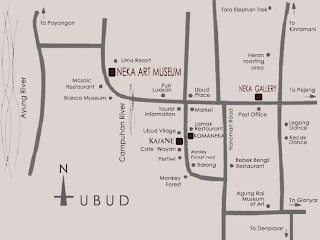As its name, the Archeological Museum (Museum Purbakala) serves to store a variety of objects of cultural heritage from prehistoric to historic times. These objects are all derived from conservation in Bali itself. Built on land with an area of approximately 5165 meters and is divided into three parts namely the outer, middle, and inner.
There are at least nine hall in the courtyard outside of the museum is used for a meeting room. And in the central courtyard serves to store and display of ancient objects from the museum's contents. Various collections of historical and pre historical details at this museum are divided into two groups based on the time or where these objects came the stone age to the bronze age, and the era of history from the eighth century until the XV century AD.
 |
| Museum Pubakala Bedulu, Bali |
About the history of the museum purbakala Bali was originated from the idea of exhibiting objects of cultural heritage is managed by the Bureau of Antiquities in 1950. The idea was first raised by the former Department of Antiquities of Bali To the Professor Dr. Rd. Soejono and Drs. Soeharto. This museum itself was officially opened by the Director General of Culture Ministry of Education and Culture of Indonesia in mid-September 1974.
 |
| Museum Pubakala Bedulu, Bali |
The facilities to provide the convenience to visitors, the museum is equipped with a relatively large parking area, bathroom and toilet. The museum is very precise, especially for those who want to know the history of civilization Bali from time to time.
 |
| Museum Pubakala Bedulu, Bali |
Location
Archaeological Museum is located on Tampaksiring main road, Bedudu Village, Blahbatu District, about 3 km from Ubud. Located about 26 km from the capital Denpasar or conversion took about 40 minutes away.
Archaeological Museum is located on Tampaksiring main road, Bedudu Village, Blahbatu District, about 3 km from Ubud. Located about 26 km from the capital Denpasar or conversion took about 40 minutes away.
Label:
Bali Interesting Places,
Central Bali,
Museum



















